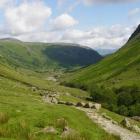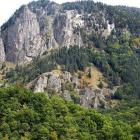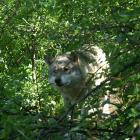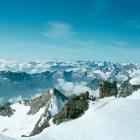Vildmark and Ödemark—Swedish
In Nordic mythology no wilderness exists. The elements are mirrored by the Gods, who are living parts of nature and live in the same way as human beings with their quarrels, love stories, hatred, and greediness. In the Poetic Edda, the creature that gives life to the first of the divine Aesir family (Swed. Asaätt) is the cow Audhumbla, licking the god free out of a rock. Thus agriculture is present from the very beginning when the world is coming into being.
In the Swedish context the term ödemark (“desert, wilds, waste”) is commonly used when describing large forested and sparsely populated backwoods, but not when referring to wild and uncontrolled areas. The forest wasteland is always described in the context of colonization, thus describing the wilderness in cultural terms, as something inherited in the culture of the people living in this sparsely populated area. A synonym for “wasteland” is the Finnish word erämaa; the root, erä, has “period” or “cycle” among its meanings. Erämaa thus describes the periodic use of forest wasteland and water resources. The term exists only in an ancient historic context in Sweden, but this manner of periodically using large unsettled areas is historically the same in Sweden and Finland.
The word “wilderness” is translated in Swedish as vildmark, i.e., “wild land,” and also conjures up the word vilse with the meaning of getting lost. The word mark is used to describe different kinds of frontier zones, so the wilderness represents a kind of borderland or interface between the cultivated and the uncultivated and between the settled and unsettled. Compared with the ödemark or erämaa, the vildmark is much more out of control and more frightening.
The contemporary notion of wilderness is used in a very particular urban context, depicting a kind of Golden Age when humans lived in the untilled nature under the same conditions as the wild animals, an era when life was unregulated by society. This urban, romantic concept of wilderness stands in contrast to the parallel concept of the wasteland as a sparsely populated area available for human colonization.
What does wilderness mean in your language? Browse “Wilderness Babel” via the map.
Live map showing the location of the languages featured in the virtual exhibition. What does wilderness mean in your language? Browse “Wilderness Babel” via the map.
- Cantell, Ilse, et al. Suomi-ruotsi-suomi-sanakirja [Swedish-Finnish-Swedish dictionary]. 7th edition. Helsinki: Söderström, 2005
- Den poetiska Eddan [Poetic Edda]. Stockholm: Forum, 1957
- Hellquist, Elof. Svensk etymologisk ordbok [Swedish etymological dictionary]. Vol. 1. Lund: Gleerups förlag, 1948: 630.
- Hellquist, Elof. Svensk etymologisk ordbok [Swedish etymological dictionary]. Vol. 2. Lund: Gleerups förlag, 1948: 1343.

























